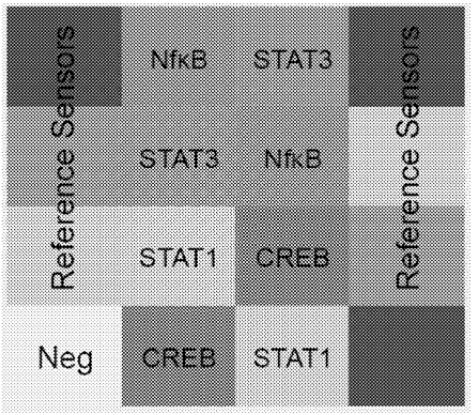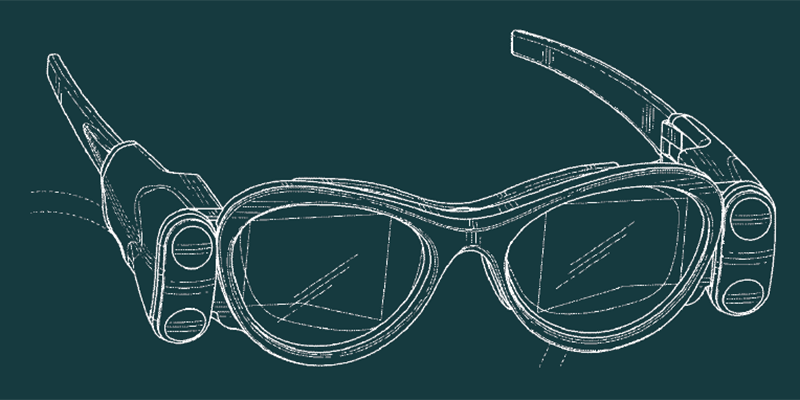In the future, people may be getting tattoos not only for cosmetic reasons but for the sake of their health as well. The technology outlined in a recently published U.S. patent application could help make checking your health as easy as checking your watch.
Designs submitted by the Carnegie Mellon University and the University of Pittsburgh, with backing from the National Institutes of Health, include methods on producing tattoos that reflect the bioactivity of cytokines: proteins that help communicate immune responses between cells. Researchers aim to make these communications readable on areas where skin cells have been taught to change color according to the bioactivity of different types of cytokines, associated with respective types of inflammation.

An example of a biosensor tattoo, with areas indicating inflammation status for up to 12 different cytokines.
To teach skin cells to become biosensors, researchers introduce inflammation-responsive fluorescent reporter genes, carried by adeno-associated viruses (AAVs). They note a “very minimal” health risk with viral-based biosensors. This is because reporter gene products are not designed for cell secretion, minimizing the risk of immune response to the tattoo.
The AAVs are packaged into microneedle arrays, made out of harmless biocompatible polymers. The needles quickly dissolve after piercing the skin, releasing the AAVs in 30 minutes or less. Skin cells would start producing fluorescent protein in response to inflammatory signals after about 48 hours.

An example of a biosensor tattoo, with areas indicating inflammation status for up to 12 different cytokines.
Steps in the patent application’s biosensor tattoo proof-of-concept. The microneedle array’s plasmid backbone is removed after 30 minutes, once the needles have dissolved.
The inventors state that a tattoo’s reactions to cytokine bioactivity may either be visible to the naked eye or require imaging devices and illumination under specific wavelengths. These devices would generate a digital representation of the tattoo to use in an image-analysis software. Analysis may be carried out on a computer, smartphone, or smartwatch.
Since the biosensors rely on epidermal keratinocytes, which have a lifespan of about four weeks, the tattoos are also only expected to function for about 28 days. Monthly biosensor redeployment enables chronic monitoring from months to years. However, more permanent skin cell populations, like epidermal stem cells in the fifth and deepest layer of the epidermis, may be targeted to produce lifetime-permanent biosensor tattoos.
The patent application says a biosensor tattoo may offer instant and precise monitoring of a person’s physiological state due to disease or environmental exposure, among others. The tattoo may also serve as a timely way to assess drug response, especially in cases where physiological changes occur well before measurable symptom changes can be observed. The technology is expected to enable earlier and more precise medical interventions through a minimally invasive, semi-permanent tattoo.
The featured patent application, “Biosensor Tattoos and Uses Therefor for Biomarker Monitoring”, was filed with the USPTO on December 23, 2020 and published thereafter on June 24, 2021. The listed applicants are Carnegie Mellon University and University of Pittsburgh – Of the Commonwealth System of Higher Education. The listed inventors are O. Burak Ozdoganlar, Marcel P. Bruchez, Phil G. Campbell, Jonathan W. Jarvik, Louis Falo, and Geza Erdos.






